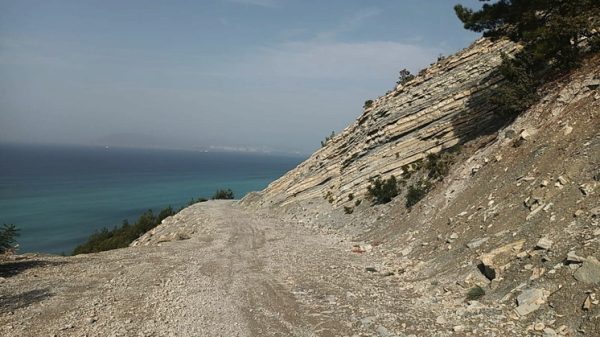Tropical Storm Beta was making a slow crawl to the shores of Texas and Louisiana on Sunday, casting worries about heavy rain, flooding and storm surge across the Gulf coast.
Beta was one of three named storms in the Atlantic basin. If the system makes landfall in Texas, which forecasters predict it will sometime on Monday, it would be the ninth named storm to make landfall in the continental US in 2020. Colorado State hurricane researcher Phil Klotzbach said that would tie a record set in 1916.
Forecasters ran out of traditional storm names on Friday, forcing the use of the Greek alphabet for only the second time since the 1950s.
Coastal communities began preparing for Beta, with both the city of Galveston and Galveston county issuing voluntary evacuation orders. The city of Seabrook to the north of Galveston did too.
County judge Mark Henry said at a Saturday news conference his concern was based on rising waters creating a storm surge and that a mandatory evacuation is not expected.
“If you can survive in your home for three or four days without power and electricity, which we’re not even sure that’s going to happen, you’re OK,” Henry said. “If it’s uncomfortable or you need life support equipment, maybe go somewhere else.”
Beta was brewing in the Gulf of Mexico, 200 miles south-east of Galveston, Texas, the US National Hurricane Center said. The storm had maximum sustained winds at 60mph and was moving west-north-west at 3mph. Little change in strength was expected as the system approaches Texas, forecasters said. Earlier predictions showed Beta could reach hurricane strength before making landfall.
A tropical storm warning was in effect from Port Aransas, Texas, to Morgan City, Louisiana. A hurricane watch, a tropical storm watch and a storm surge watch were all discontinued.
Forecasters were predicting up to 4ft of storm surge from Port Aransas, Texas, to Rockefeller Wildlife Refuge, Louisiana. Strong winds, and life-threatening surf and rip current conditions were also expected with the storm.
Hurricane Teddy remained a powerful hurricane on Sunday, with maximum sustained winds at 105mph and moving west-north-west at 12mph. Teddy was centered 320 miles south-south-east of Bermuda less than a week after Hurricane Paulette made landfall in the wealthy British territory.
A tropical storm warning was in effect for Bermuda. Large swells from Teddy were impacting the Lesser Antilles, the Greater Antilles, the Bahamas, Bermuda, the US East Coast and Atlantic Canada, forecasters said.
Tropical Storm Wilfred was still at sea but expected to dissipate by Tuesday.
Parts of the Alabama coast and Florida Panhandle were still reeling from the effects of Hurricane Sally, which roared ashore on Wednesday. At least two deaths were blamed on the system. Roughly 82,300 were still without power in the Florida Panhandle on Saturday. Gulf Power said 95% of its customers in hardest hit Escambia and Santa Rosa counties will have power restored by the end of the day on Tuesday.




















































Свежие комментарии